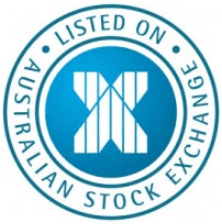
By Evan Lucas for Chris Weston, Chief Market Strategist at IG Markets
Fed differentials and market data
Asia has once again gleefully followed the leads from the US; popping yesterday and weakening today.
Mixed durable goods order – which, excluding transport, came in a 0.2% from 0.9% but expanded on the headline figure – coupled with a good service number did little to instil confidence in US trade, and the S&P and DOW gave up most of yesterday’s gains.
The US is currently spluttering out of the winter months and that is likely to continue over the coming months. It will be interesting to see if jobless claims remain at four month lows tonight and it would build positive momentum into next week’s employment data.
However the US GDP print, which is also being released tonight, is expected to fall and if the release shows US growth is contracting harder and broader than forecasted, the benign growth story could be a development for the market’s positioning of central bank differentials and rate expectations – specifically the bond and currency markets.
Although the Fed has managed to give itself a two point mantra for QE –unemployment and inflation – you can’t look past the GDP numbers. The Fed has manages to do a marvellous job of making the market believe 2% to 2.5% growth is creditable; but realistically that is below trend.
Considering the interest in the Fed funds rate over the past week a disappointing GDP print, tonight could have an interesting effect on the Fed futures and bond markets.
In my opinion the movement in economic projections which has seen the Fed funds rate rises being brought forward and up in 2015 and 2016 will be a game changer in the yield play trade. The prospect of a breakdown in high yielding equities for the higher yielding, and what will be cheaper US treasuries is coming. This will see a breakdown in the carry trade and the repatriation of USDs that have been globally dispersed; as hot money that entered the market from QE returns; I’ll be watching this space closely.
What could moderate the spike up in the USD is foreign demand. Overnight a very strong five-year auction squeezed out US fixed income and took out USD long positions according to Goldman Sachs. This triggered stops in USD/JPY, pushing it to 101.92 and the USD/CAD snapped lower, taking out the support band at $1.112 to drop to $1.108. These two pairs had been a clear play on central bank differentials, with the BoJ the most dovish in the G10 followed by the COB; it has been a clear play for several months, but the appeal of US treasures is clear from what happened overnight. The demand from foreign investors for treasuries will be a trade to watch out for.
Interestingly, non-voting member St Louis Fe President Jamie Bullard addressed the Asian Investment Conference in Hong Kong and stated that policy makers are yet to commit on what month the asset-purchase program will completely end and if the economy was moving off track in a significant way from what we had previously expected. As a known dove this is expected, but just reiterates that there is still a market issue around the open-endedness of the QE program.
With uncertainty in the US market, the futures are dragging and at the time of writing where point to 0.75% contraction. The current sell-off looks to be continuing
European Stumble
What is also likely to push market lower in Europe is the fact that France has just registered its worst ever jobless print with the number of French out of work hitting 3.347 million in February, that’s a 4.7% gain year-on-year. This shows that despite France snapping out of a 13 month contraction in manufacturing on Wednesday, the effect of the previous months is biting into the second largest eurozone country.
The headache for both Francois Hollande and Mario Draghi is the currency, and at $1.378 this is still well above the comfort level and means the prospect of ECB stimulus will gain momentum if the southern states stutter again and France sees real slowdown concerns – all eyes will be on the ECB press conference next Thursday. The movement in the EUR over the coming weeks is likely to be a key insight into how likely the market believes rates move.